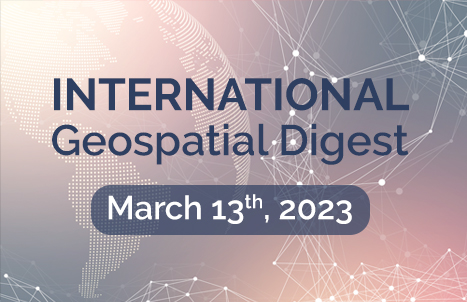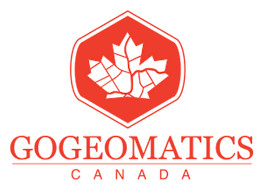
-
GIS portal enhances collaboration for UK nuclear power station
-
Stanford-led study reveals a fifth of California’s Sierra Nevada conifer forests are stranded in habitats that have grown too warm for them
-
Groundbreaking map shows toxic ‘forever chemicals’ in more than 330 wildlife species
-
Even Hubble’s seeing a growing number of satellite tracks
-
Applications of Geospatial Data in Cybersecurity
-
The Geospatial Data Act might get an amendment
-
Building maps to help geothermal energy and greater sage-grouse coexist in Nevada’s sagebrush country
GIS portal enhances collaboration for UK nuclear power station
A GIS portal has been implemented for the Hinkley Point C nuclear power station in the UK, which will enhance collaboration and communication among the various teams involved in the project. The portal enables access to real-time information on project progress, risk management, and safety data. It also includes a mobile app that enables field workers to access data and capture information in real-time. The system has streamlined communication and improved efficiency for the project, providing a comprehensive overview of the construction site and facilitating collaboration between teams. Read more here.

Stanford-led study reveals a fifth of California’s Sierra Nevada conifer forests are stranded in habitats that have grown too warm for them
“Zombie forests” are areas with high levels of dead or dying trees due to a combination of factors like drought, insect infestations, and wildfires in the western United States. These forests can impact ecosystems, leading to higher wildfire risk, reduced carbon storage, and changes in wildlife populations. Scientists suggest restoring forest health through prescribed burns and selective logging as potential solutions. Researchers at Stanford Woods Institute for the Environment used interactive maps to illustrate the changing landscapes of zombie forests in the western United States which were the first maps of their kind to be created. Read more here.

Groundbreaking map shows toxic ‘forever chemicals’ in more than 330 wildlife species
A new report by the Environmental Working Group (EWG) reveals that 330 wildlife species across the globe are contaminated by perfluoroalkyl substances (PFAS), often called ‘forever chemicals’. The analysis of over 100 peer-reviewed studies, based on the detection of 120 unique PFAS compounds in the animals, shows that the chemicals are present on every continent except Antarctica. PFAS bioaccumulate and do not break down in the environment, so exposure raises serious health concerns for the affected animals. The interactive map prepared by the EWG shows information about locations where PFAS chemicals have been found in the bodies of wildlife in the United States. Read more here.

Even Hubble’s seeing a growing number of satellite tracks
There is a growing concern among astronomers about the impact of space junk and a growing number of functional satellites on astronomical observations. The Hubble Space Telescope is capturing an increasing number of satellite tracks in its images, according to a new analysis of past Hubble images. The increase is attributed to space junk and the growing number of functional satellites in orbit. Most of the mega-constellations being put into orbit are below Hubble’s altitude, but its orbit has been decaying over time, which could cause it to drop into the region where these constellations are present before its instruments start to fail. Read more here.

Applications of Geospatial Data in Cybersecurity
These days, geospatial data is a big deal when it comes to cybersecurity, as location-based information can help identify and mitigate cyber threats. Geospatial data can be used to monitor and secure critical infrastructure, track the movement of cyber attackers, and improve incident response times. Additionally, the integration of geospatial data with artificial intelligence and machine learning can further enhance cybersecurity efforts. Read more here.

The Geospatial Data Act might get an amendment
The Geospatial Data Act of 2023 will be introduced to the U.S. Congress. The act would establish a Federal Geographic Data Committee (FGDC) and a National Geospatial Technical Operations Center (NGTOC) to manage the collection and distribution of geospatial data in the United States. It would require federal agencies to use open data standards and make their geospatial data publicly available to the greatest extent possible, which could help improve things like disaster response, infrastructure planning, and more. Read more here.
Building maps to help geothermal energy and greater sage-grouse coexist in Nevada’s sagebrush country
US Geological Survey (USGS) is using maps and technology to find a balance between geothermal energy production and the conservation of Greater Sage-Grouse habitat in Nevada. By identifying areas of overlap between the two, the USGS is developing tools to minimize negative impacts on sage-grouse while still allowing for geothermal development. Collaboration between government agencies, industry, and conservation groups in finding solutions that benefit both the environment and the economy holds great significance. Read more here.





Be the first to comment